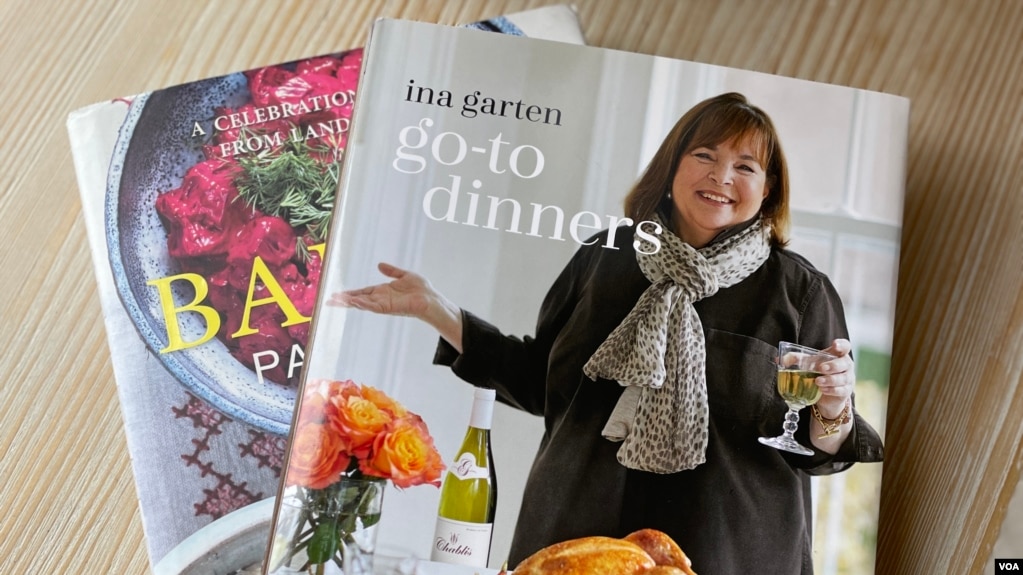AUDIO
Cookbooks Show American Culture

Are you interested in food, United States history, and the English language? If so, American cookbooks provide wide information in all three subjects. The first, published in 1796, started a market that continues in the 21st century with online publications of such works. And, the literature offers more than just recipes.
Megan Elias is the director of food studies at Boston University and the writer of Food on the Page: Cookbooks and American Culture. She says that cookbooks do help teach us how to prepare food. But they provide more than that, too.
“The concept of meals, how many meals a day that people expect to eat? What do they expect to have in those meals?” Elias said.
They also inform readers about discoveries, equipment and technology related to food making.
Elias said, “What are the objects that are necessary to make the things and what exists? So, are you being asked to do something over an open fire or are you being asked to use an electric stove? Is it something that can be done in the microwave? If you see a lot of recipes for things that are preserved for pickles, you know that you are looking at a time without refrigeration.”
Amy Bentley is a food historian at New York University. She said that cookbooks from the 1800s were used as lifestyle and household guides. They include food recipes, but they were not central to the books back then.
“So, there's some recipes for food, but it could be recipes for a cleaning solvent or what to do when your child has been poisoned, how to clean, how to get stains out,” Bentley said.

The very first U.S. cookbook, "American Cookery," also called "The art of dressing viands, fish, poultry, and vegetables : and the best modes of making pastes, puffs, pies, tarts, puddings, custards, and preserves." (Library of Congress)
American Cookery by Amelia Simmons is the first cookbook published in the United States. Simmons wrote that her goal with the book was to improve the new generation of women in the U.S.
Megan Elias says that after the Civil War, cookbooks became more diverse. Writers started exploring local foods and customs in their work.
Elias said that Southern cookbooks tried to offer “… a beautiful version of the old South that will kind of heal over the wounds of the Civil War rather than dealing with the problems that caused the Civil War to begin with.”
Some communities would put together a group cookbook to raise money. These cookbooks provide a look into what the American middle class was eating throughout the years. Such works serve as a record of the traditions and interests of different neighborhoods and groups.
Throughout the years cookbooks have signified humanity’s growth in knowledge, trends and innovations. During the last part of the 19th century, for example, many recipes were informed by the dangers of food containing bacteria. Then, in the 1930s, refrigerators became common objects in American homes. The threat of bacterial infection from food dropped, and very soon, cooks adapted to the new conditions. New recipes and new cookbooks resulted.
But cookbooks are not complete reflections of American life. Elias said publishing companies mostly control cookbook content. And, their main goal is to make money from book sales.
“The publishing world doesn't necessarily have the goal of representing the truth of Americans who made it. It tends to be upper middle class, white, Northeastern.”

FILE - While many fiction and non-fiction readers might they prefer e-books, the vast majority of cookbook readers prefer print, according to research by the Book Industry Study Group. (AP Photo/Matthew Mead)
In the 21st century, with the growth of social media and food websites, publishing companies have less control. These new ways to share recipes have led to more open discussions about food and cooking. This gives the public more choices and power.
Elias praised the new discussions around food.
“If you look at the comments on food blogs and on any kind of recipe site, you really get to see what people are cooking, and what they think of how they're cooking, and how they think of themselves as experts.”
Physical cookbooks are still highly desirable as well, Bentley says. “They're very good to give as gifts. They're very, very popular because they're sort of neutral. And everyone loves a cookbook, especially with beautiful pages,” she said.
________________________________________________
Words in This Story
literature — n. written works that are considered to be very good and to have lasting importance
recipe — n. a set of instructions for cooking a specific food, including a list of the ingredients required
concept — n. an idea of what something is or how it works
microwave — n. an oven that uses very short wave of electromagnetic energy to cook food
preserved — adj. to describe something kept in its original state or in good condition
solvent — n. a liquid used for breaking down other substances
stain — n. a mark made on a surface or a piece of clothing that is very hard or impossible to remove
reflect — v. to mirror or show an aspect of something
innovation — n. the act or process of introducing new ideas, devices, or methods
neutral — adj. not having positive, negative, or other characterizations based on a person's likes or dislikes.
https://learningenglish.voanews.com/a/cookbooks-show-american-culture/7436473.html